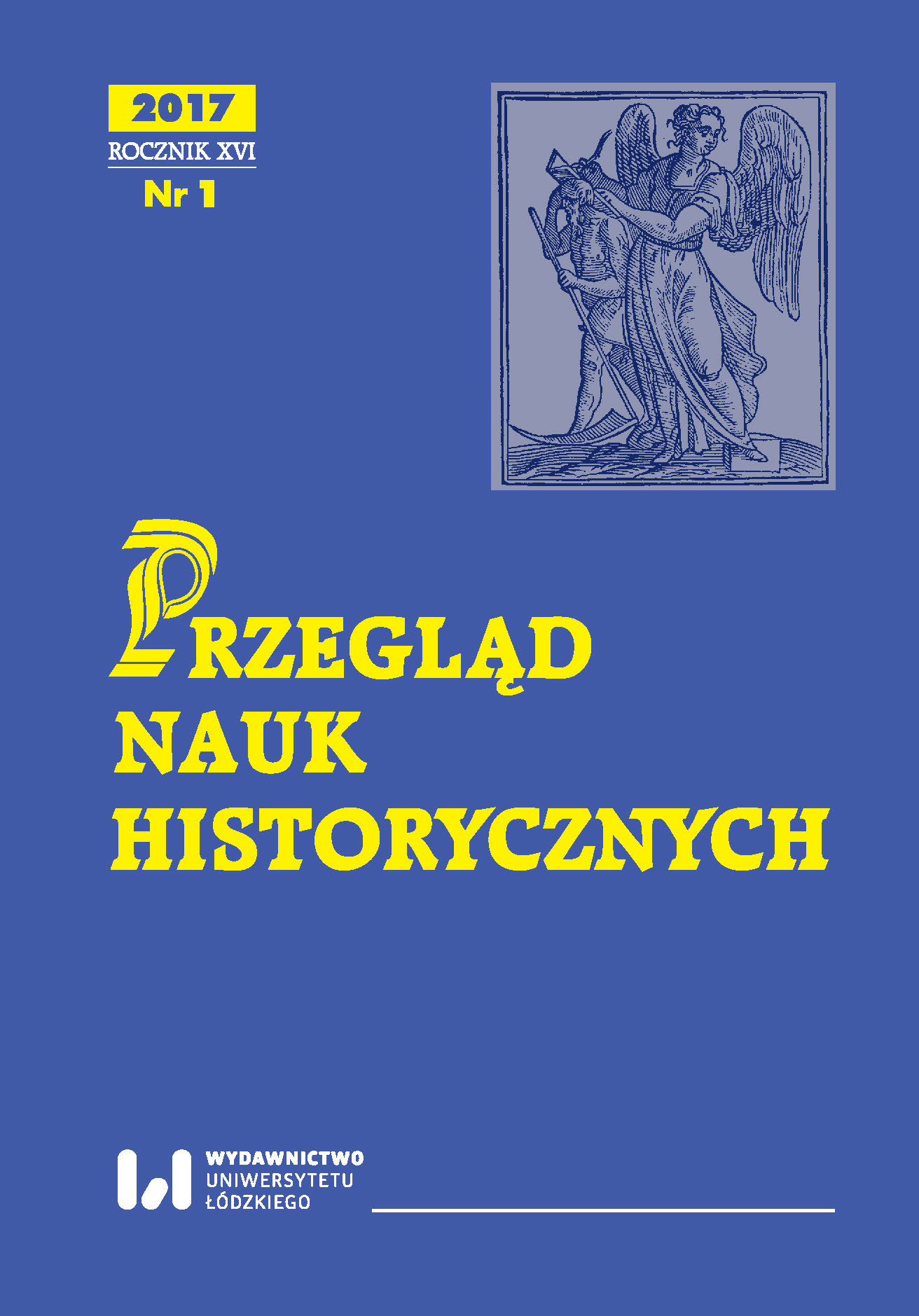Plastyka łódzka u schyłku XIX i na początku XX wieku
Fine arts in the city of Łódź at the end of the 19th and at beginning of the 20th centuries
Author(s): Aneta PawłowskaSubject(s): History, Cultural history, Local History / Microhistory, Recent History (1900 till today)
Published by: Wydawnictwo Uniwersytetu Łódzkiego
Keywords: Łódź; „Evil City”; visual art; culture; 19th century; 20th century
Summary/Abstract: The aim of this article is to present the situation of the Artistic Circles in the city of Lodz at the turn of the 19th and 20th century. In light of the research results published by various Lodz art historians and historians in different publications starting from the 1970s until the present times of the 21st century, one can say that the situation of the fine arts and the status of the artists themselves in the city of Lodz in the late 19th and early 20th century, contrary to popular belief, was not really bad but as a matter of fact quite satisfactory. The wealthy families of the capitalists and industrialists from the city of Lodz, which grew richer every day and which constantly strove to attain a higher and stronger position for their generation in the social hierarchy, emphasized their material status by means of building and constructing lavishly and expensively equipped villas and city palaces and by surrounding themselves with the works of art in these luxurious dwellings, especially in the last two decades of the 19th century. The representatives of the successive generations of factory-owners families (who were becoming increasingly well-educated) developed a strong passion for collecting works of art. Exhibition halls were being organized also at this time by such art dealers as: Z. Bartkiewicz, J. Pawłowski, K. Biedrzyński, J. Grodek and T. Kozanecki. Well-known and celebrated artists and architects who lived in the city of Lodz at the turn of the 19th and 20th century included such persons as: S. Hirszenberg, L. Pilichowski, M. Trębacz, H. Glicenstein, D. Landé and A. Zeligson. / Celem artykułu jest prezentacja sytuacji środowisk artystycznych w Łodzi na przełomie XIX i XX w. W świetle prowadzonych przez łódzkich historyków i historyków sztuki badań, począwszy od lat siedemdziesiątych XX w. aż po XXI w., można stwierdzić, że sytuacja sztuk pięknych i samych artystów w Łodzi u schyłku XIX i na początku XX w., wbrew obiegowym opiniom, nie była zła. Rodziny łódzkich przemysłowców, bogacąc się i budując pokoleniowo coraz mocniejszą pozycję w hierarchii społecznej, podkreślały swój status, wznosząc luksusowo wyposażone wille i pałace miejskie i otaczając się dziełami sztuki zwłaszcza w ostatnim dwudziestoleciu XIX w. Przedstawiciele kolejnych pokoleń rodów fabrykanckich (coraz lepiej wykształceni) rozwijali pasje kolekcjonerskie. Działały też salony wystawiennicze, np. Z. Bartkiewicza, J. Pawłowskiego, K. Biedrzyńskiego, J. Grodka, T. Kozaneckiego. Do uznanych artystów i architektów mieszkających w Łodzi na przełomie XIX i XX w. należeli: S. Hirszenberg, L. Pilichowski, M. Trębacz, H. Glicenstein, D. Landé i A. Zeligson.
Journal: Przegląd Nauk Historycznych
- Issue Year: 16/2017
- Issue No: 1
- Page Range: 167-192
- Page Count: 26
- Language: Polish

